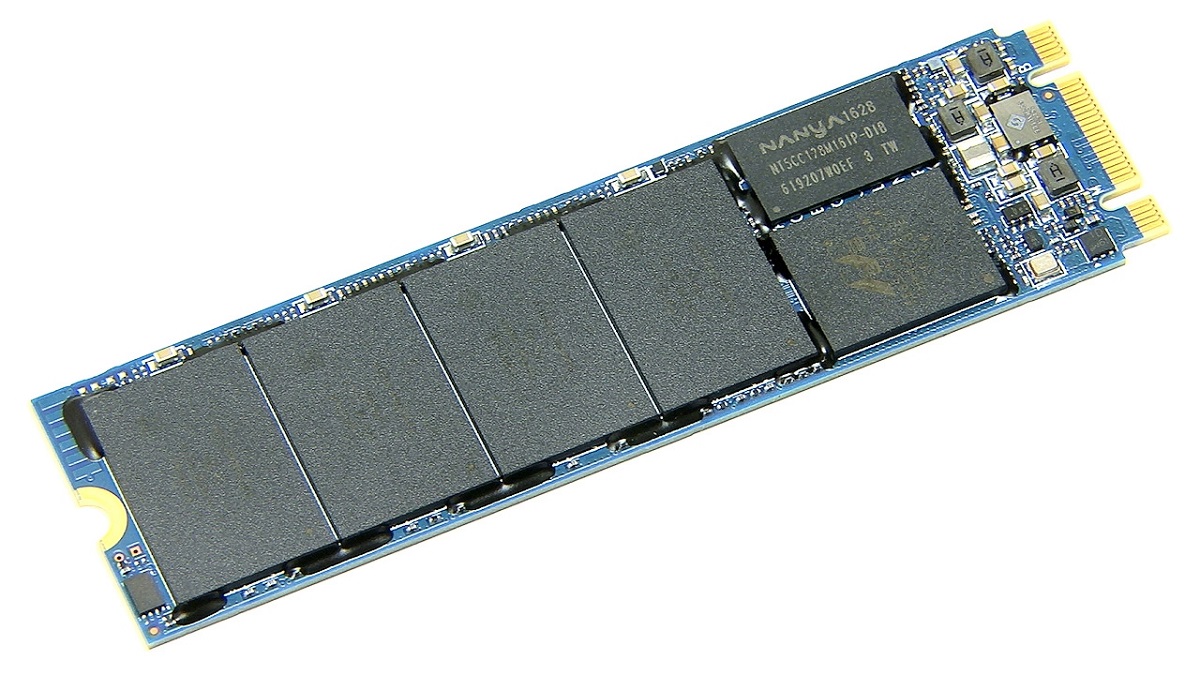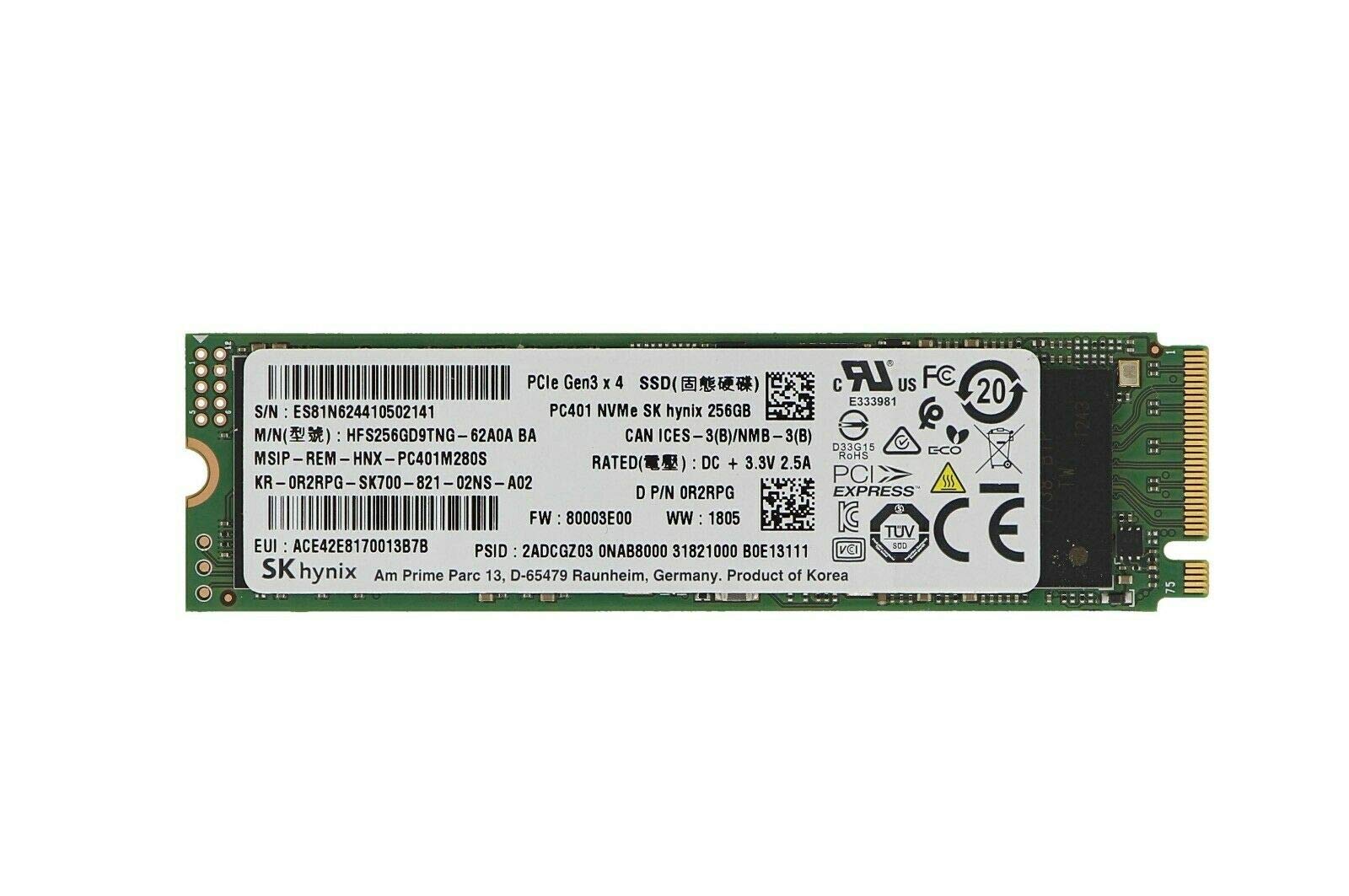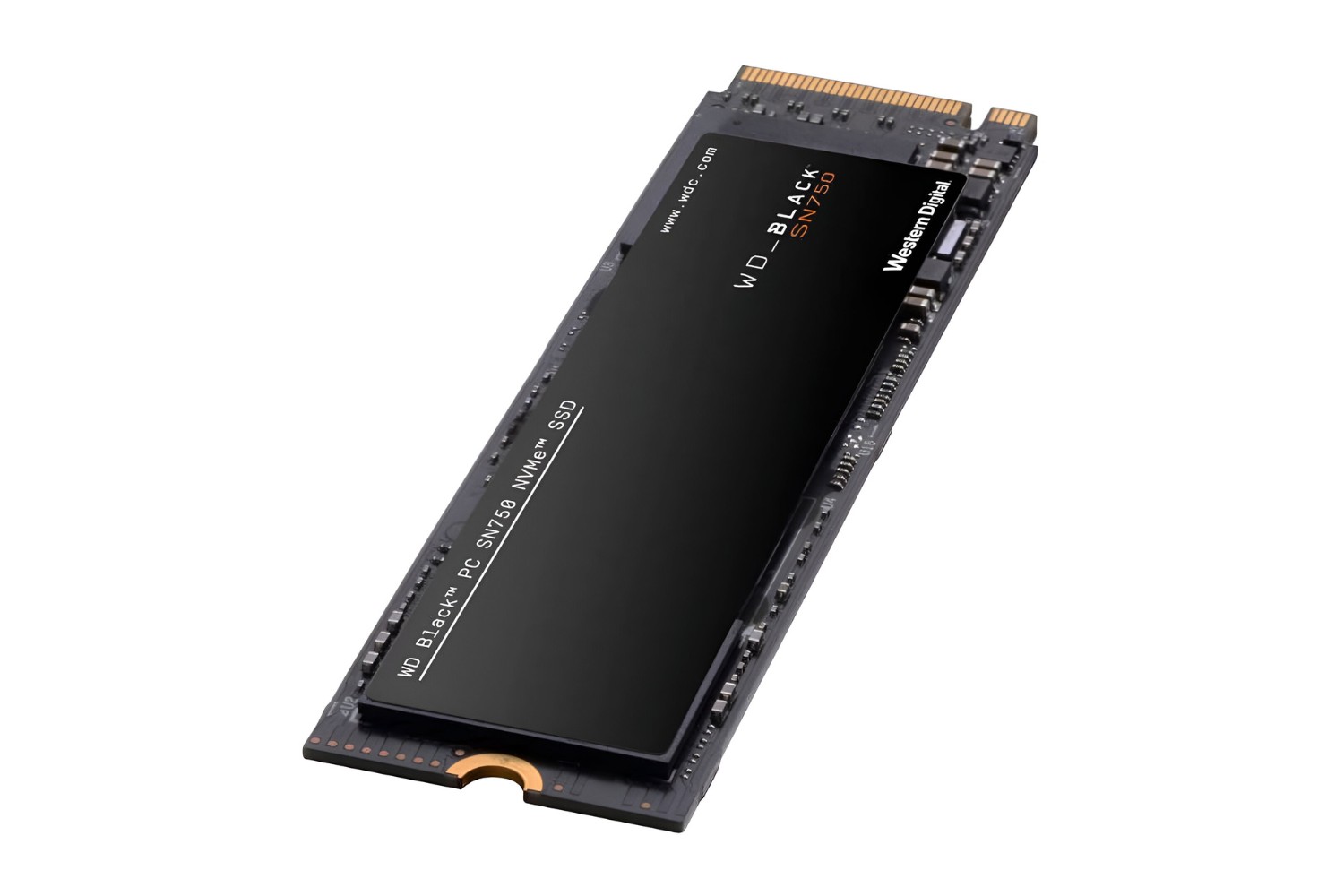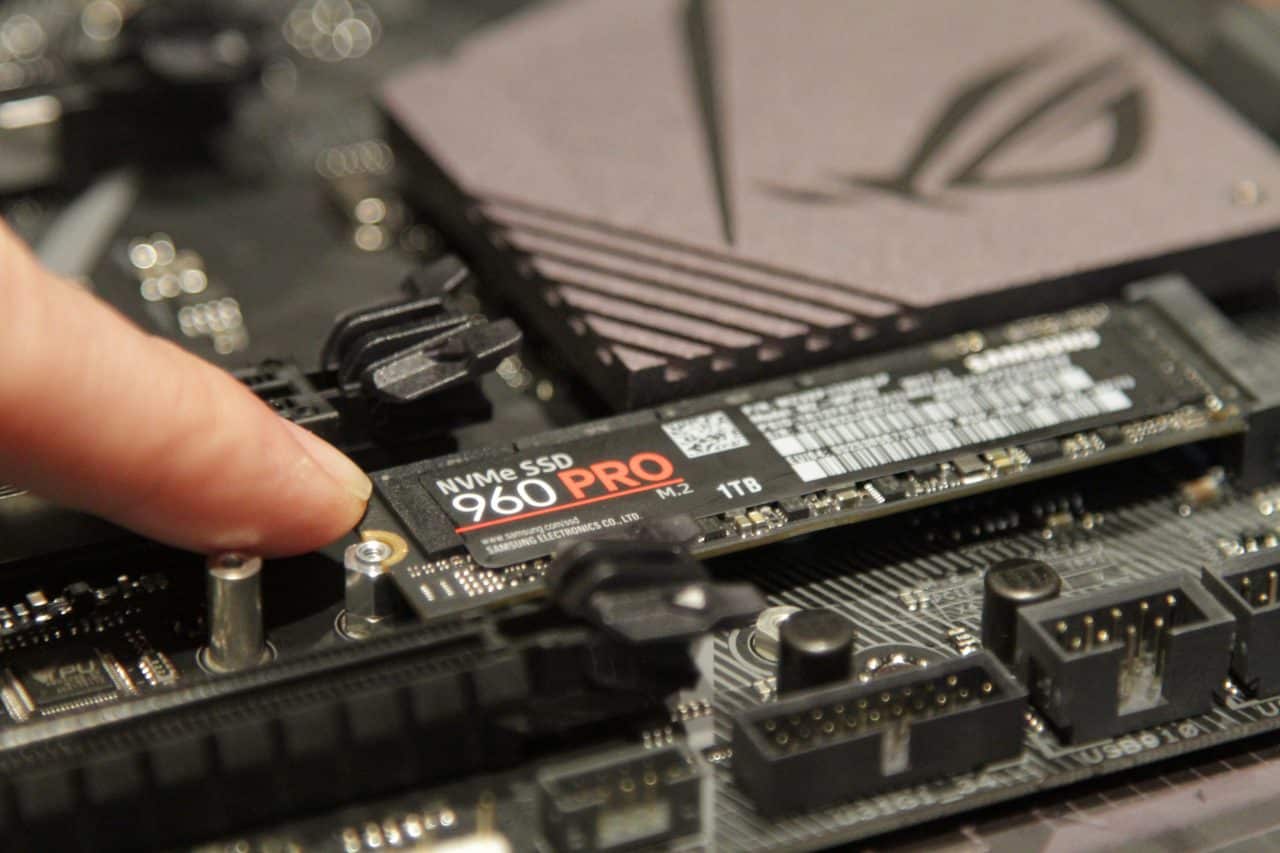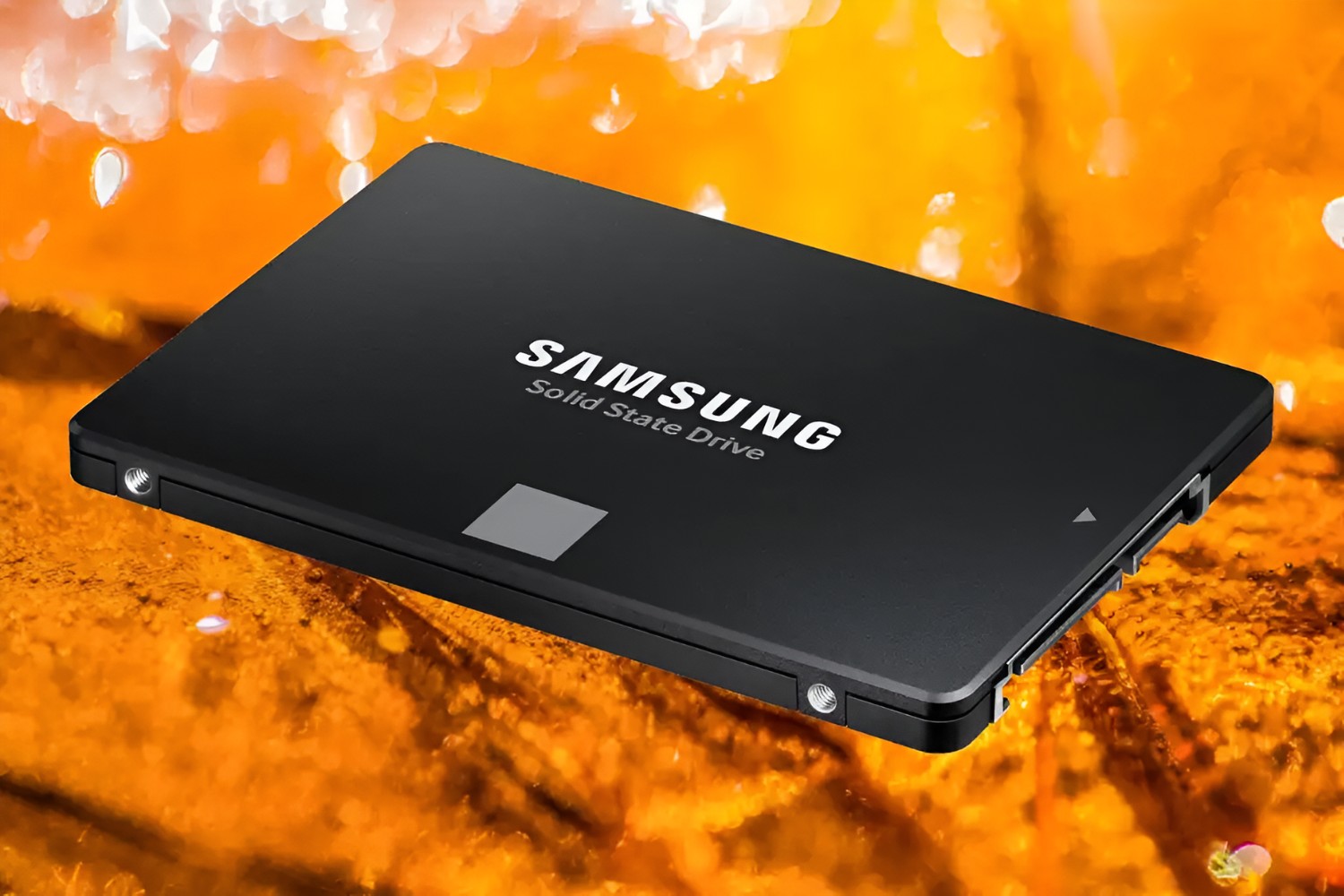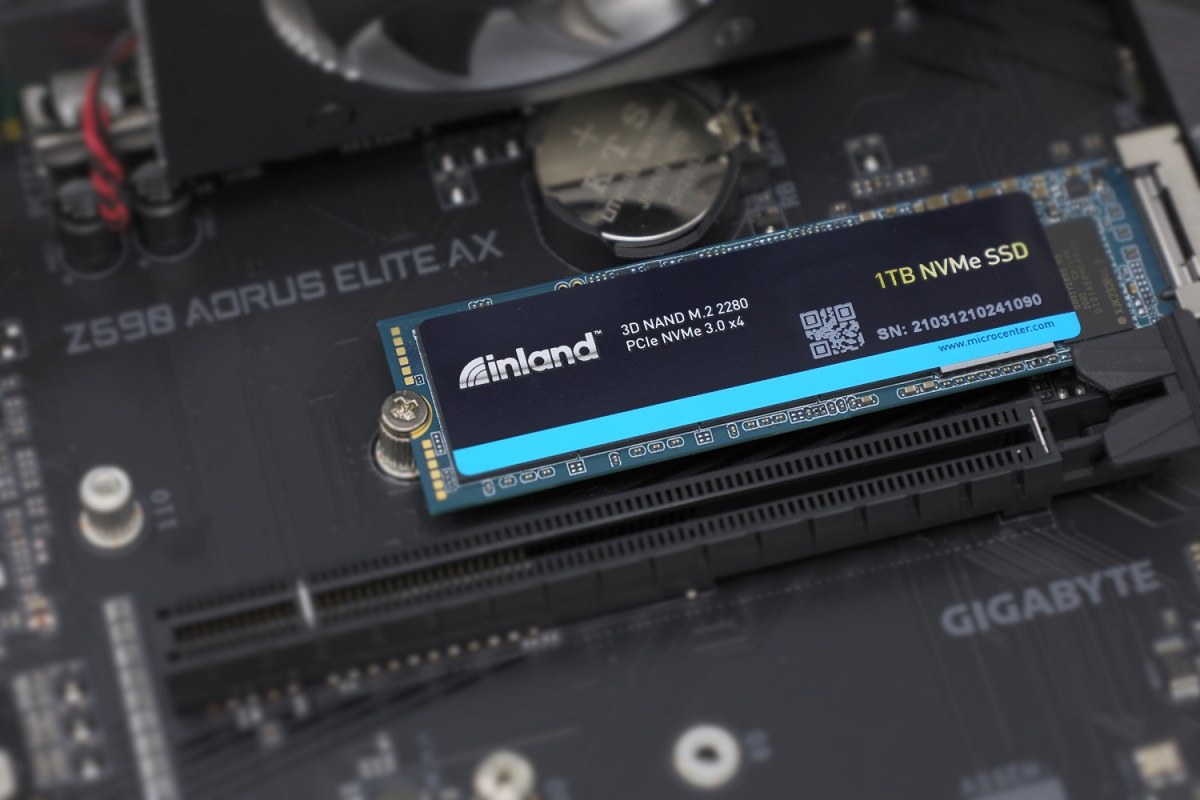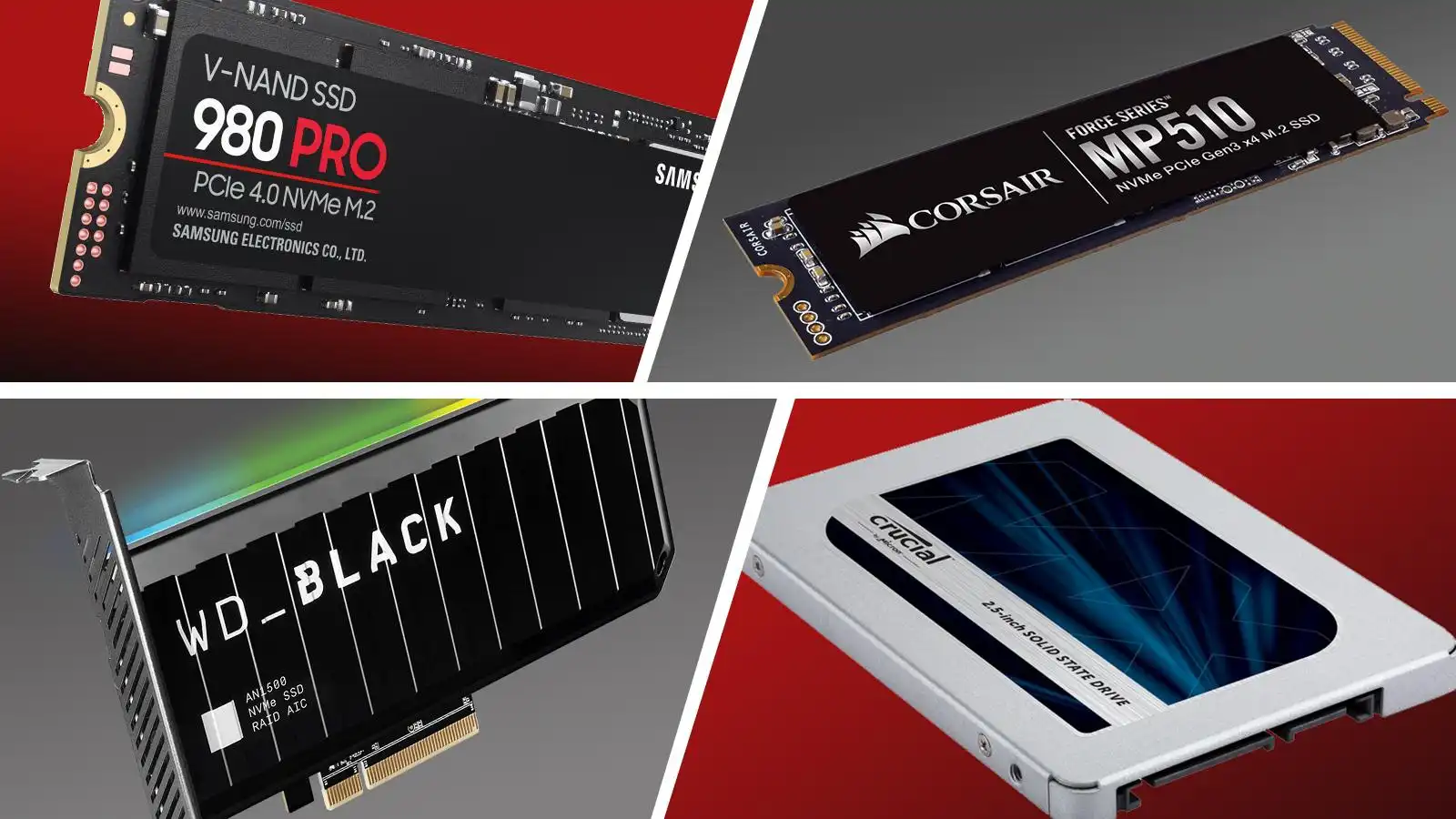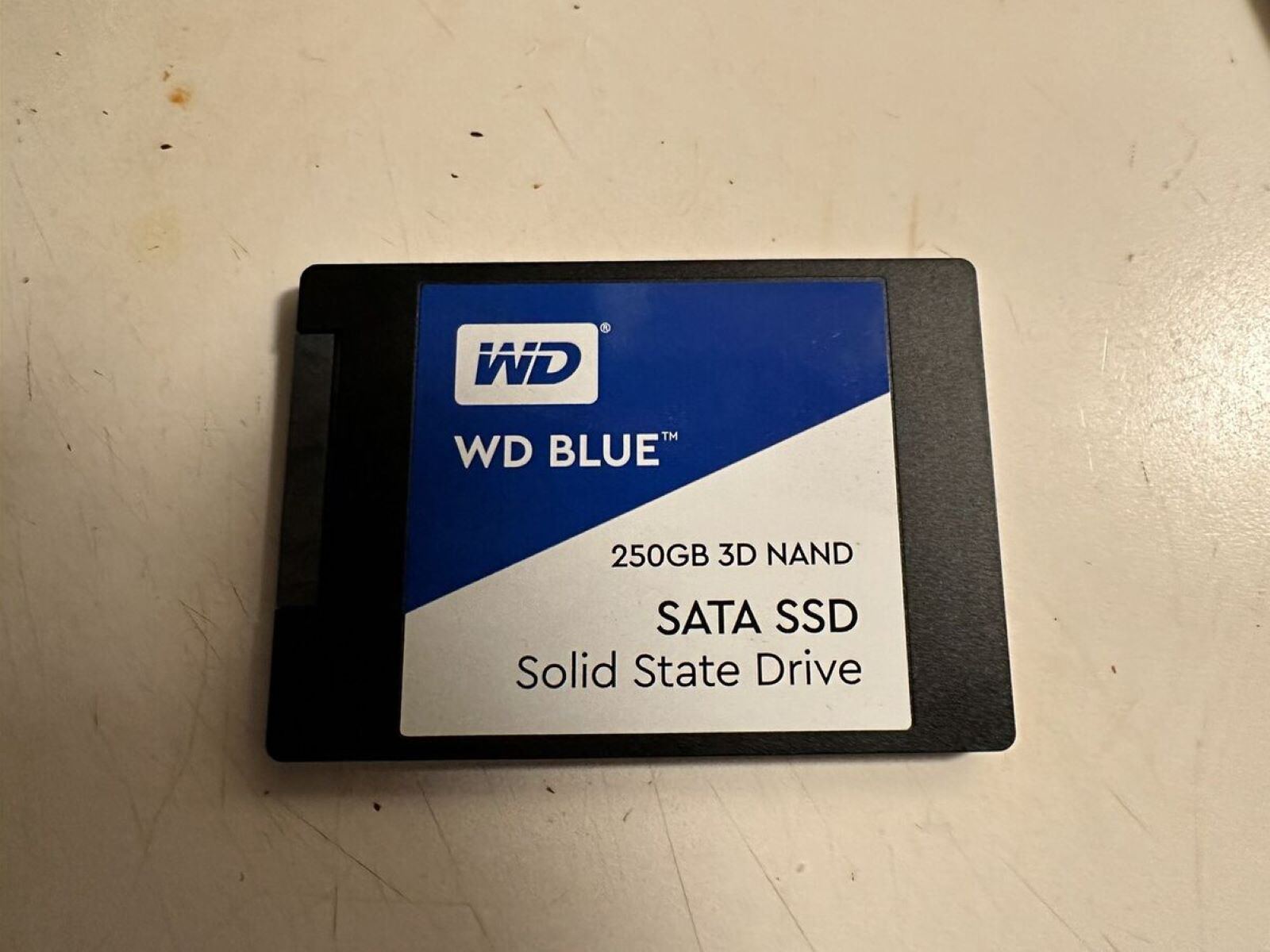Introduction
Welcome to the world of solid state drives (SSDs), where technology is constantly evolving to deliver faster and more efficient storage solutions. One such innovation is the M.2 SSD, a compact and versatile storage device that has gained significant popularity in recent years.
An M.2 SSD, also known as Next Generation Form Factor (NGFF), is a small, rectangular-shaped data storage device that connects directly to the motherboard of a computer. It is designed to replace traditional hard disk drives (HDDs) and provide faster read/write speeds, improved performance, and enhanced reliability.
The M.2 SSD is not only praised for its speed and performance but also for its compact size. Unlike conventional SSDs, which are typically mounted in standard drive bays, M.2 SSDs are directly integrated onto the motherboard or inserted into special M.2 slots. This allows for more efficient use of space within the computer case, making it especially popular in compact builds or slim laptops.
In this article, we will explore the world of M.2 SSDs, discussing their benefits, types, key features, installation process, compatibility considerations, and tips for choosing the right one for your needs.
Whether you are a casual computer user looking to upgrade your storage or a hardcore gamer seeking faster load times, this article will serve as a guide to help you navigate the world of M.2 SSDs and make informed decisions.
What is an M.2 Solid State Drive?
An M.2 SSD is a type of solid state drive that offers a superior alternative to traditional hard disk drives (HDDs). It utilizes flash memory technology to store data, resulting in faster read and write speeds, improved system responsiveness, and increased overall performance.
The M.2 SSD gets its name from the M.2 form factor, which refers to the physical size and shape of the drive. It is a small, rectangular circuit board with various lengths and widths, making it highly versatile and suitable for different types of devices, including laptops, PCs, and even some gaming consoles.
Compared to traditional HDDs, M.2 SSDs have several key advantages. Firstly, they offer significantly faster data transfer speeds, enabling quicker boot-up times, faster application launches, and shorter file transfer durations. This makes them ideal for tasks that require high-speed data access, such as video editing, gaming, and professional content creation.
Additionally, M.2 SSDs are more durable and reliable than HDDs. Since they do not have any moving parts, there is a lower risk of mechanical failure, resulting in improved data integrity and a longer lifespan. This is particularly important for individuals who rely on their storage for critical files and data backups.
Another advantage of M.2 SSDs is their compact form factor. Unlike bulky HDDs, M.2 SSDs are slim and light, making them a perfect choice for portable devices like ultrabooks and small form factor PCs. Their small size also allows for easier cable management and better airflow within the computer case, contributing to improved overall system thermals.
M.2 SSDs come in various capacities, ranging from 120GB to several terabytes, allowing users to choose the storage capacity that best fits their needs. With their high-performance capabilities and versatility, M.2 SSDs have become the preferred choice for gamers, professionals, and enthusiasts who demand top-notch performance and storage solutions.
In summary, an M.2 SSD is a compact, high-performance storage device that utilizes flash memory technology to provide faster read and write speeds, improved durability, and enhanced overall system performance. Its versatility and compact form factor make it an excellent choice for various devices, from laptops to PCs. With these benefits in mind, M.2 SSDs have become a game-changer in the world of data storage.
Advantages of M.2 SSDs
M.2 SSDs offer several advantages over traditional storage options, making them a preferred choice for many users. Let’s explore some of the key advantages:
- Faster Speeds: One of the main advantages of M.2 SSDs is their impressive speed. With read and write speeds significantly faster than HDDs, M.2 SSDs deliver speedy system boot times, quicker application launches, and swift file transfers. This means you spend less time waiting and more time being productive or enjoying your favorite activities.
- Compact Form Factor: M.2 SSDs are incredibly small and slim, allowing for easy integration into a wide range of devices. From ultra-thin laptops to space-limited mini PCs, M.2 SSDs provide storage without compromising the compact design of the device. This is especially valuable for users who prioritize portability and sleek aesthetics.
- Improved Reliability: Unlike traditional HDDs, which rely on spinning platters and mechanical components, M.2 SSDs have no moving parts. This enhanced durability reduces the risk of mechanical failures and data loss, ensuring your valuable data remains safe and intact. M.2 SSDs are also more resistant to shocks and vibrations, making them ideal for portable devices that are frequently on the move.
- Energy Efficiency: M.2 SSDs are designed to be energy-efficient, consuming less power compared to traditional HDDs. This not only helps to prolong the battery life of laptops and portable devices but also reduces heat generation, contributing to improved overall system thermals and a quieter computing experience.
- Enhanced Performance: M.2 SSDs provide faster access to data, resulting in improved system performance and responsiveness. Applications load quicker, files open faster, and multitasking becomes smoother. This can greatly benefit gamers, creative professionals, and anyone who deals with large files or resource-intensive tasks.
- Increased Capacity: M.2 SSDs come in a wide range of storage capacities, allowing users to choose the size that meets their needs. Whether you require a smaller capacity for everyday computing or a larger capacity for extensive media files or gaming libraries, there is an M.2 SSD option available to suit your requirements.
In summary, the advantages of M.2 SSDs include faster speeds, compact form factor, improved reliability, energy efficiency, enhanced performance, and increased capacity. These benefits make M.2 SSDs an appealing choice for users seeking high-performance storage solutions that deliver speed, reliability, and versatility in a compact package.
Types of M.2 SSDs
M.2 SSDs come in various types, each offering different capabilities and features. Let’s explore the most common types:
- SATA-based M.2 SSDs: These M.2 SSDs utilize the Serial ATA (SATA) interface, which is the same interface used by traditional 2.5-inch SATA SSDs. While SATA-based M.2 SSDs offer faster speeds compared to traditional HDDs, they are limited by the maximum SATA speed of 6 gigabits per second (Gbps). These drives are an affordable option for users looking to upgrade from HDDs but may not offer the same level of performance as other types of M.2 SSDs.
- PCIe-based M.2 SSDs: PCIe (Peripheral Component Interconnect Express) is a faster and more advanced interface compared to SATA. PCIe-based M.2 SSDs utilize the PCIe lanes on the motherboard, providing significantly faster data transfer speeds. These drives can reach speeds of up to 32 gigabits per second (Gbps) or higher, depending on the generation and number of PCIe lanes available. PCIe-based M.2 SSDs are the preferred choice for users who demand the highest level of performance, such as gamers and content creators.
- NVMe-based M.2 SSDs: NVMe (Non-Volatile Memory Express) is a communications standard specifically designed for SSDs. NVMe-based M.2 SSDs take advantage of the parallel nature of PCIe, allowing for even faster data transfer speeds than traditional PCIe-based SSDs. NVMe SSDs can reach speeds of up to 4 gigabytes per second (GB/s) or higher. These drives are known for their exceptional performance, low latency, and high throughput, making them ideal for demanding tasks like gaming, video editing, and data-intensive applications.
It’s important to note that not all M.2 slots on motherboards support NVMe-based SSDs. Some M.2 slots may only support SATA-based SSDs or PCIe-based SSDs. Therefore, it’s crucial to check the motherboard’s specifications and compatibility before purchasing an M.2 SSD.
In summary, the main types of M.2 SSDs include SATA-based, PCIe-based, and NVMe-based. SATA-based M.2 SSDs offer an affordable option with faster speeds compared to traditional HDDs but may not provide the same level of performance as other types. PCIe-based M.2 SSDs utilize the faster PCIe interface, while NVMe-based M.2 SSDs take advantage of the NVMe standard to achieve even higher speeds. Choosing the right type of M.2 SSD depends on your specific requirements and system compatibility.
Key Features and Specifications of M.2 SSDs
M.2 SSDs come with a range of key features and specifications that determine their performance and compatibility. Understanding these features will help you make an informed decision when choosing an M.2 SSD. Let’s explore some of the most important ones:
- Form Factor: M.2 SSDs come in different lengths (commonly 22mm, 42mm, 60mm, 80mm, and 110mm) and keying options (B-key, M-key, and B+M key). It’s essential to check the physical dimensions and key type supported by your motherboard or device to ensure compatibility.
- Capacity: M.2 SSDs are available in various capacities, ranging from small storage options like 120GB to larger ones like 2TB or higher. Consider your storage needs and choose a capacity that suits your requirements and budget.
- Interface: The interface of an M.2 SSD determines its data transfer speed and compatibility. SATA-based M.2 SSDs use the SATA III interface, typically offering speeds up to 6 Gbps. PCIe-based M.2 SSDs can utilize PCI Express Gen 3 or Gen 4 slots, providing faster speeds depending on the number of lanes used.
- Read/Write Speeds: The read and write speeds of an M.2 SSD indicate how fast data can be transferred to and from the drive. Higher speeds result in quicker system boot times, faster file transfers, and improved overall performance. Consider your usage requirements and opt for an M.2 SSD with suitable read and write speeds.
- Endurance and Lifespan: M.2 SSDs have a limited number of program/erase (P/E) cycles, which affects their lifespan. The endurance rating is usually expressed in terabytes written (TBW) or drive writes per day (DWPD). Higher endurance ratings are desirable for users who perform extensive read/write operations or need long-lasting storage solutions.
- Cache: Some M.2 SSDs feature built-in cache memory, which acts as a temporary storage buffer for frequently accessed data. This cache can enhance overall performance by speeding up read and write operations. SSDs with larger cache sizes tend to provide better performance.
- Power Consumption: M.2 SSDs are known for their energy efficiency compared to traditional HDDs. However, power consumption can still vary between different models. Lower power consumption not only helps extend battery life in laptops but also contributes to cooler and more efficient operation.
Considering these key features and specifications will help you select an M.2 SSD that meets your specific needs. Whether you’re building a gaming PC, upgrading a laptop, or looking for faster storage options, understanding these factors can make a significant difference in the performance and longevity of your system.
Compatibility Considerations
When considering an M.2 SSD, it’s important to keep compatibility in mind to ensure that the drive will work seamlessly with your existing hardware. Here are some factors to consider:
- Motherboard Compatibility: Check your motherboard’s specifications to determine if it supports M.2 slots and the specific key type and lengths it supports. Some motherboards may only support certain types of M.2 SSDs, such as SATA-based or PCIe-based. Additionally, ensure that your motherboard’s BIOS is up to date to ensure proper recognition and compatibility with the M.2 SSD.
- Interface Compatibility: Consider the interface supported by your M.2 slot and the interface supported by the M.2 SSD you intend to purchase. For example, a motherboard with a PCIe Gen 3 slot may not be compatible with a PCIe Gen 4 M.2 SSD. Ensure that the interface of the M.2 SSD matches the interface supported by your motherboard or expansion card.
- Length and Key Type: M.2 SSDs come in various lengths (e.g., 22mm, 42mm, 60mm, 80mm, 110mm) and key types (e.g., B-key, M-key, B+M key). Check your motherboard’s specifications to determine the supported lengths and key types. Choosing an incompatible length or key type may result in the M.2 SSD not fitting properly or not being recognized by the system.
- Operating System Support: Ensure that your operating system supports the M.2 SSD interface and that you have the necessary drivers installed. Most modern operating systems, such as Windows 10, macOS, and Linux, have built-in support for M.2 SSDs, but it’s always a good idea to check for any specific requirements or updates.
- Shared Bandwidth: Some motherboards may share bandwidth between the M.2 slot and other components, such as SATA ports or PCIe slots. Verify if using an M.2 SSD will disable or limit the functionality of other components on your motherboard. Refer to your motherboard’s documentation or manufacturer’s website for details.
- Thermal Considerations: M.2 SSDs can generate heat during intensive data transfers, potentially affecting performance. Ensure your system has adequate cooling and airflow to dissipate heat efficiently. Some motherboards also come with heat spreaders or heatsinks specifically designed for M.2 SSDs to help regulate temperature.
By considering these compatibility factors, you can ensure that your chosen M.2 SSD will seamlessly integrate into your system, maximizing its performance and functionality. Checking the specifications, consulting documentation, and seeking advice from hardware experts if needed, will help you make an informed decision.
Installing an M.2 SSD
Installing an M.2 SSD is a relatively straightforward process, but it’s important to follow the correct steps to ensure a successful installation. Here is a general guide on how to install an M.2 SSD:
- Gather the necessary tools: Before you start, make sure you have the tools required for the installation. Typically, you’ll need a screwdriver (often a small Phillips or Torx) and possibly an anti-static wrist strap to protect sensitive components from electrostatic discharge.
- Prepare your system: Shut down your computer and disconnect the power cable. If you’re installing the M.2 SSD as an additional drive, ensure that the computer is off and unplugged from the power source.
- Locate the M.2 slot: Identify the M.2 slot on your motherboard. Consult your motherboard’s documentation or look for the slot labeled as M.2. It is typically located near the CPU socket or along the edge of the motherboard.
- Install the M.2 SSD: Gently insert the M.2 SSD into the M.2 slot at approximately a 30-degree angle. Make sure the gold connectors on the SSD align with the slot on the motherboard. Apply gentle pressure to ensure the SSD is fully inserted and seated properly.
- Screw the SSD in place: Depending on your motherboard and M.2 SSD, you may need to secure the SSD with a screw. Locate the screw hole near the end of the M.2 slot and use the appropriate screwdriver to secure the SSD in place. Be careful not to overtighten the screw.
- Replace the cover: If you had to remove any covers or heatsinks to access the M.2 slot, carefully reattach them to provide protection and promote proper airflow. Ensure that everything is securely fastened.
- Reconnect and power on: Reconnect the power cable and any other cables you disconnected. Power on your computer and enter the BIOS settings to verify that the M.2 SSD is recognized. If not, ensure that it is properly seated and consult the motherboard’s documentation for troubleshooting steps.
It’s important to note that the installation process may vary slightly depending on your specific motherboard and device. Always consult the motherboard’s manual and follow any specific instructions provided by the manufacturer.
With the M.2 SSD successfully installed, you can now take advantage of its enhanced speed and performance. Ensure that you update your operating system and install the necessary drivers for optimal functionality. Enjoy the benefits of faster boot times, improved application loading, and seamless multitasking with your new M.2 SSD.
How to Choose the Right M.2 SSD for Your Needs
Choosing the right M.2 SSD is crucial to ensure optimal performance and compatibility with your specific requirements. Here are some factors to consider when selecting an M.2 SSD:
- Storage Capacity: Determine your storage needs and choose an M.2 SSD with an appropriate capacity. Consider the types of files you’ll be storing, such as documents, photos, videos, or games, and make sure to leave room for future growth.
- Performance: Assess your usage requirements and consider the read and write speeds offered by different M.2 SSDs. If you work with large files or engage in resource-intensive activities like gaming or video editing, opt for an SSD with faster speeds to ensure smooth and efficient performance.
- Interface and Compatibility: Verify the interface supported by your motherboard and ensure compatibility with the M.2 SSD you’re considering. Determine whether your motherboard supports SATA-based, PCIe-based, or NVMe-based M.2 SSDs, and select the appropriate type accordingly.
- Endurance and Lifespan: Consider the endurance rating of the M.2 SSD, typically measured in terabytes written (TBW) or drive writes per day (DWPD). Higher endurance ratings are desirable for users who engage in extensive read/write operations or need a long-lasting storage solution.
- Budget: Set a budget for your M.2 SSD and factor in the features, performance, and warranty offered by different models. Compare prices from reputable brands and find a balance between your budget and the desired specifications.
- Brand and Reputation: Choose an M.2 SSD from a reputable manufacturer known for producing reliable and high-quality storage solutions. Check customer reviews and ratings to gauge the overall satisfaction and reliability of the SSD.
- Warranty: Consider the warranty offered by the manufacturer. Most M.2 SSDs come with a warranty period that can range from a few years to several, providing peace of mind and protection against any potential defects or issues.
It’s also beneficial to research and compare various M.2 SSD models, read professional reviews, and seek advice from knowledgeable sources to make an informed decision. By considering these factors, you can select an M.2 SSD that meets your specific needs, ensuring optimal performance, reliability, and compatibility.
Conclusion
M.2 SSDs have revolutionized the world of storage by offering faster speeds, improved performance, and compact form factors. Whether you’re a gamer looking for quick load times, a creative professional in need of high-speed data transfers, or a casual user seeking a reliable and efficient storage solution, M.2 SSDs have something to offer for everyone.
In this article, we explored the concept of M.2 SSDs, understanding their advantages over traditional HDDs, the different types available (such as SATA-based, PCIe-based, and NVMe-based), and the key features and specifications to consider when choosing the right one for your needs. We also discussed compatibility considerations and provided a general guide on how to install an M.2 SSD.
When choosing an M.2 SSD, consider factors such as storage capacity, performance, interface compatibility, endurance, budget, brand reputation, and warranty. By carefully assessing your requirements and conducting thorough research, you can select an M.2 SSD that perfectly suits your needs and provides enhanced storage capabilities for your system.
Remember to check your motherboard’s specifications, read user reviews, and consult professional opinions before making a purchase. By doing so, you can ensure that you invest in a reliable and high-performance M.2 SSD that will enhance your computing experience.
So, whether you’re upgrading an existing system or building a new one from scratch, embrace the speed and efficiency of M.2 SSDs and open doors to faster boot times, quicker application launches, and seamless multitasking.







